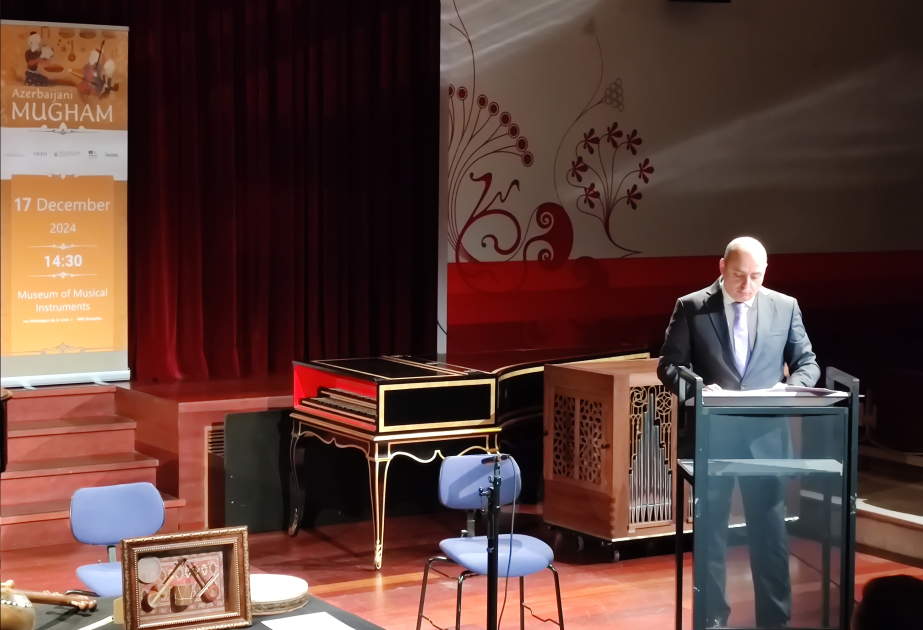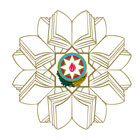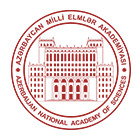Seymur Fataliyev: Azerbaijani musical instruments donated to the museum will be a bridge between the cultures of the two countries
2024-12-18
The tar, kamancha, and qaval are fundamental elements of the mugham musical genre, recognized by UNESCO as a masterpiece of the intangible cultural heritage of humanity. To date, Azerbaijan has included 24 elements on UNESCO's Representative List of the Intangible Cultural Heritage. During the 19th session of the UNESCO Intergovernmental Committee for the Safeguarding of the Intangible Cultural Heritage, held in Asuncion, Paraguay, the national nomination "The Art of Making Tandir and Baking Bread in Azerbaijan" was added to the list.
AZERTAC reports that Seymur Fataliyev, Secretary General of the Azerbaijani National Commission for UNESCO, made these remarks at an event in Brussels where Azerbaijani national musical instruments were donated to the Royal Museum of Art and History. "Azerbaijani culture is very rich and diverse, but the art of mugham holds a special place." The Mugham trio, consisting of tar, kamancha, and gaval, represents an outstanding example of Azerbaijani musical traditions rooted in history. "Although this trio took its current form in the 19th century, the instruments that compose it and the music they play have much more ancient origins," S. Fataliyev provided detailed information about these musical instruments. He stated that the tar is a symbol of Azerbaijani musical identity, a stringed musical instrument that offers unparalleled depth of expression. The kamancha, with its rich and expressive timbre, is the true voice of the Azerbaijani soul. As for the gaval, it is the central rhythmic element of mugham, bringing structure and pulse to this unique music.
The Secretary General of the National Commission for UNESCO presented musical instruments, their history and symbolism in detail. "The tar is an important instrument of Azerbaijani music. According to the most common version, this instrument appeared in the 16th century, but its modern version was improved in the 1870s by the famous musician Mirza Sadiq Asad oglu. Since 2012, the "Art of Making and Playing the Tar, a Stringed Musical Instrument" has been included in the Representative List of the Intangible Cultural Heritage of Humanity. The tar we present was made from mulberry wood and decorated with natural mother-of-pearl by Eyvaz Ibrahimov, a master of stringed musical instruments in Baku.
The kamancha is one of the oldest instruments in the Azerbaijani musical tradition. With its soft, elegant, and slightly melancholic tone, the kamancha is particularly popular with music lovers. The kamancha we present is a handmade instrument made of mulberry and walnut wood, decorated with natural mother-of-pearl. Its upper part is covered with a thin membrane made of sturgeon skin.
The gaval, accompanied by the tar and kamancha, completes the traditional mugham trio. The main role in this trio is played by the singer, who plays the qavali (drum) to record rhythmic melodies. "The gaval we are presenting is the handiwork of master Mehman Mammadov in the city of Ganja. It is made of mulberry wood. The fish skin membrane gives the instrument a unique resonance," said S. Fataliyev.
The Secretary General emphasized that these instruments will be a strong bridge between the cultures of the two countries and will introduce visitors to the history, beauty, and depth of Azerbaijani music, inspiring them to further discover and explore our rich cultural heritage.
Shahla Aghalarova
Special correspondent of AZERTAC
Paris
















